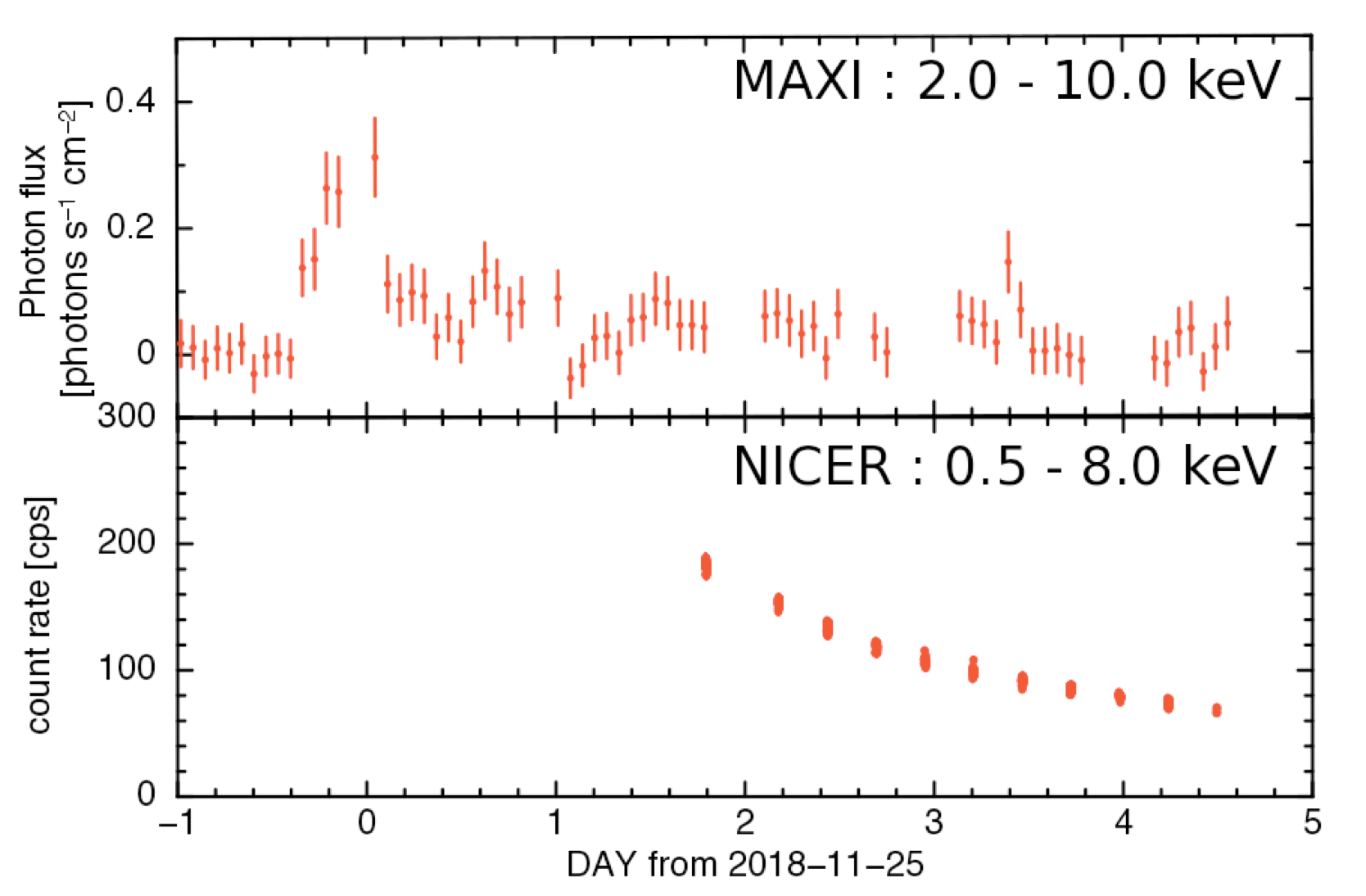NICER / ISS Science Nugget for November 29, 2018NICER follow-up observations of a MAXI flare from UX AriThe all-sky monitor MAXI, located on the ISS JEM-EF, detected a large X-ray flare from the RS CVn-type binary star UX Ari at 2018-11-24 15:54 UT. The flare peak occurred near 2018-11-25, and the peak spectrum is well reproduced by a distribution of thermal emission with a maximum temperature kT > 3.5 keV (or approximately 40 million degrees C). The estimated flux in the 2–10 keV band is (1.1 ± 0.3) x 10-9 erg/s/cm2. Assuming the distance of 52 pc, the peak luminosity corresponds to 4 x 1032 erg/s. NICER follow-up observations began on 2018-11-26 21:59 UT with monitoring every 6 hours. During the interval 2018-11-26 21:59 to 2018-11-27 16:31, the NICER 0.4–8.0 keV lightcurve is well reproduced by an exponential decay with a time constant of 2.06 days (see figure). The decay slowed after this interval, with an exponential decay time constant of 3.19 days between 2018-11-27 22:42 and 2018-11-28 11:03. We expect that the flare will continue through 2018-12-01.
This is the longest X-ray flare ever seen from UX Ari. Due to the length of this flare, the most extensive multiwavelength coordinated campaign ever done has been executed to understand the physics of this phenomenon: NICER has coordinated observations with MAXI, the Hitachi 32-m and Yamaguchi 34-m radio telescopes in Japan, optical telescopes at Chuo University, as well as with the UV telescope on the Japanese Hisaki satellite. This detection was reported in Astronomer's Telegram #12248. NICER
|



